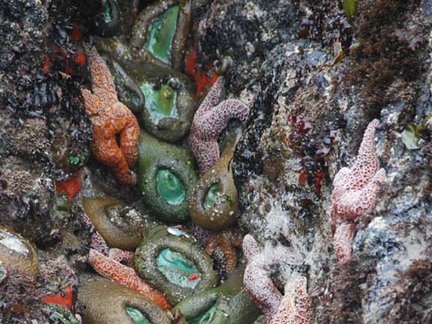There seem to be two predominant methods of handing out awards, the democratic — say the People’s Choice awards or those based on sales — or the oligarchic — like the Oscars or the Nobels. (I have no idea what the Grammys could possibly represent.) Given the lip service paid to democratic impulses around the globe, it’s a trifle ironic that the awards most prized are those handed out by the oligarchs.
This edition of Miller-McCune.com’s top stories of the year takes that concept an important step further, from oligarchy to monarchy, which should really thrill the proles. Rather than be chosen by a panel of grandees, our most memorable stories are chosen by yours truly, the guy tapping this out with two lightning-fast index fingers.
Given the weight of responsibility this entails, I’ve flinched somewhat (just as I bravely did last year) and instead of choosing a list of the 10 best, I present 10 memorable articles we’ve posted. This gives me ample wiggle room dealing with offended writers — “Yes, your story truly was superior, but I just forgot about it” — and for not violating any formless (that’s an ‘f,’ not a ‘g’) laws of format immutability.
If that wasn’t weaselly enough, stories are presented in no particular order and, because my own judgment is questionable, I’ve pored over Google Analytics to see which Web-only articles had the highest readership.
With those caveats weighing down this already tragic endeavor, here are 10 goodies from 2009.
This Is Your Brain on Kafka
In 2008 our most-clicked article was a psychology-themed News Blog entry by our staff writer Tom Jacobs. This year our most popular article is … a psychology-themed News Blog entry by our staff writer Tom Jacobs. “This Is Your Brain on Kafka,” with its immortal blurb, “Does absurdist literature make you smarter? Giraffe carpet cleaner, it does!” drew heaps of attention and accounted for 3 percent of all page views to our Web site this calendar year.

Is White the New Green?
So what else caught readers’ eyes in 2009? Roofs. Our coverage of using white roofs as a small weapon in the campaign against climate change apparently struck a nerve. We did a couple of stories on the subject, most notably John Perlin’s “Keep Cool With the Albedo Effect” and Sam Kornell’s “Is White the New Green?” well before Energy Secretary Steven Chu made them a major talking point of the administration’s efforts. And if that wasn’t enough for the shingle set, we opened the year with Bruce Allen asking about leasing roofs for solar cells and closed with Enrique Gili’s gardening on the roof.

Are America’s Winds Taking a Breather?
While energy didn’t turn out to be the big story of 2009, that didn’t stop us from expending lots of it on the subject. While we’ve got a pronounced soft spot for alternative forms, that didn’t stop us from asking some uncomfortable questions, such as Michael Haederle’s pointed one about America’s winds. But in our optimistic mode we posted some omnibus looks at technologies that literally need to get off the ground, Frank Nelson’s examination of high-altitude wind power and Bruce Dorminey’s extra-planetary solar story.

Triaging the Train Wreck of Climate Change
If there was a subject we went gaga over in 2009, it was climate change (closely followed by health policy). We’ll let this fine piece by University of South Carolina biologist Brian Helmuth stand for the pack, in part because it’s eminently honest and in part because it came well before Copenhagen. But just to show we do follow the headlines, we point to Joan Melcher’s thoughtful look at the messy business of science post ClimateGate. (And Bruce Dorminey’s “A Visit to Dirty Snow Cones National Park” was nice read, too.).

Fainting in America
And then there was health policy. While there were a pair of writers presenting some excellent play-by-play coverage, David Rosenfeld and our European Dispatch blogger Michael Scott Moore, Kirk Nielsen’s description of why a single instance of fainting ran up a $10,000 bill is a parable for much of what ails the U.S. health care system.

What Would Horatio Alger Do?
Another bit of analysis by anecdote — normally something we shy away from here at the data-obsessed M-M offices — was David Rosenfeld’s look at the subprime crisis through the eyes of an immigrant who was going to lose the Baltimore row house he was over-extended on. The key concept there was “going to.” As the months passed and the payments stopped, our subject kept living in the bank’s house free of charge, as a follow-up story detailed. The housing/financial mess actually proved a fertile ground for our writers, like Kirk Nielsen’s “Squat to Own,” Sameer Pandya’s reflections on the suburban strain in the American saga, or Ken Stier’s talk with economist Robert Shiller of the now vernacular Case-Shiller index.

Ten Super Plants Fighting the Environmental Injustice League
It was a one-two punch from our spring fellow Julia Griffin, who presented a fun feature with 10 plants poised to save the world, and then followed it with 10 plants whose sap flowed with evil intent.

We Gotta Eat ’em to Save ’em
Emily Badger has re-created herself as Miller-McCune.com’s incredible Idea Lobby blogger, but those with good memories may recall she was a pretty fell hand at long-form features before she went to the blip side. This piece, with its call to preserve heritage species by eating them up, yum, has been a favorite of visitors, although I kinda like her counterintuitive “‘Clean Coal’ By Any Other Name,” which managed to trample on the shibboleths of all sides.

Autumn Trends in the Pirate War
Since we’re passing out kudos to our bloggers, how about a round of applause for Michael Scott Moore and his European Dispatch? His M.O. has been to write a series of weekly posts centering on a theme that first appears in his column in our print magazine, hence his excellent pieces on energy policy (who could forget “Liquefied Manure’s Thomas Paine May Be German”?), health policy, and of course, pirates. His pieces on the latter have engendered a fair amount of rethinking on the presumed abominability of Somali’s buccaneers, whose privateering exploits may be acts of desperation.

Re-crafting the United States as Disunited Duchies
And there’s race, which took a prominent role in the U.S. conversation as Barack Obama entered the White House. M-M approached race from several directions this year, one of the most sterling — “Racism’s Hidden Toll” in our print magazine. Among Web-only stories, I’d point to Lewis Beale’s look at two books on the “great sort” and to Phillip Atiba Goff’s “Little Things Are Still a Big Deal,” about the impact of a New York Post cartoon that used an ape motif to mock stimulus spending. Goff’s article followed up on work we’d done in 2008 on simian stereotypes (using his research), and this allowed us to demonstrate to a larger audience both what we’d been doing and why it was worth coming to Miller-McCune.com to see it.

So there we have it, 10 memorable articles from Miller-McCune.com. Except I forgot Joan Melcher’s look at a citizen scientist’s struggle to get officialdom to notice what’s happening to Montana’s wildlife in “Divining the Secret of Deformed Roadkill.” And what about Max S. Power’s authoritative look at nuclear weapons waste, Sue Russell’s two-parter with cognitive researcher Itiel Dror, David Richardson’s hunt for the missing sink, or Richard Korman’s look at airline safety. No Lee Drutman at all? That can’t be, especially with the great piece about Colbert. Nothing from our very talented current fellows?
Well, as they say in baseball, there’s always next year.
Sign up for our free e-newsletter.
Are you on Facebook? Become our fan.
Follow us on Twitter.




